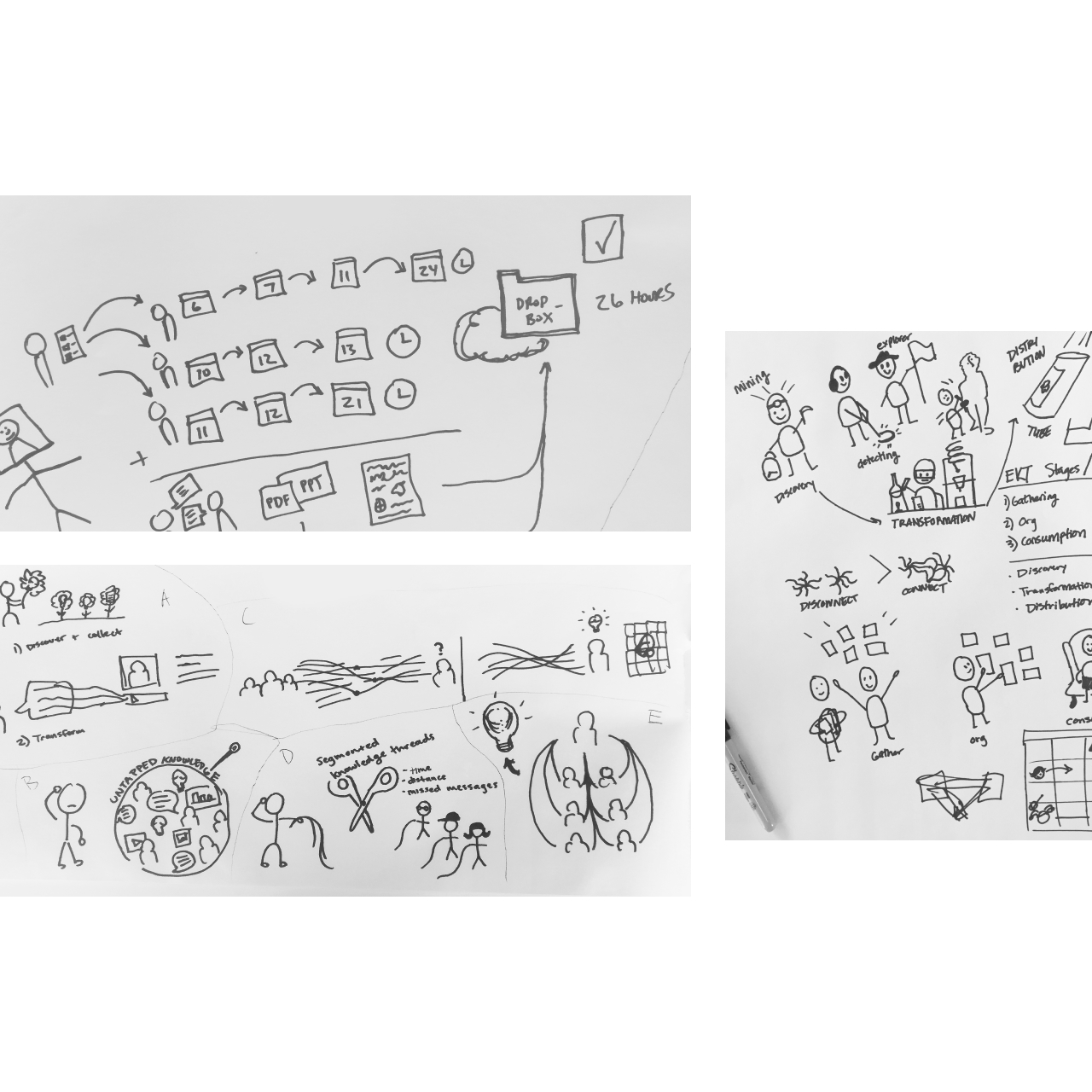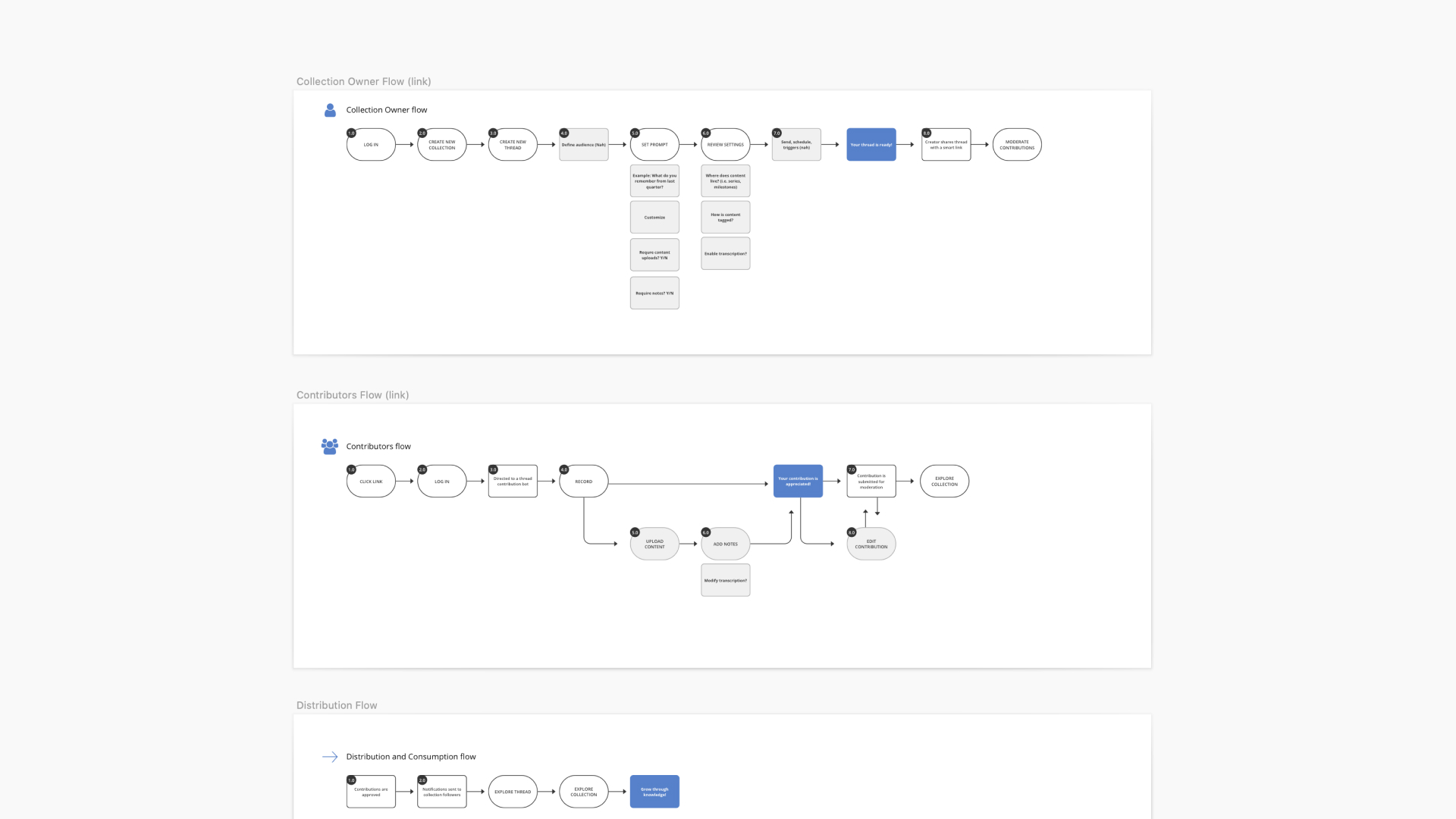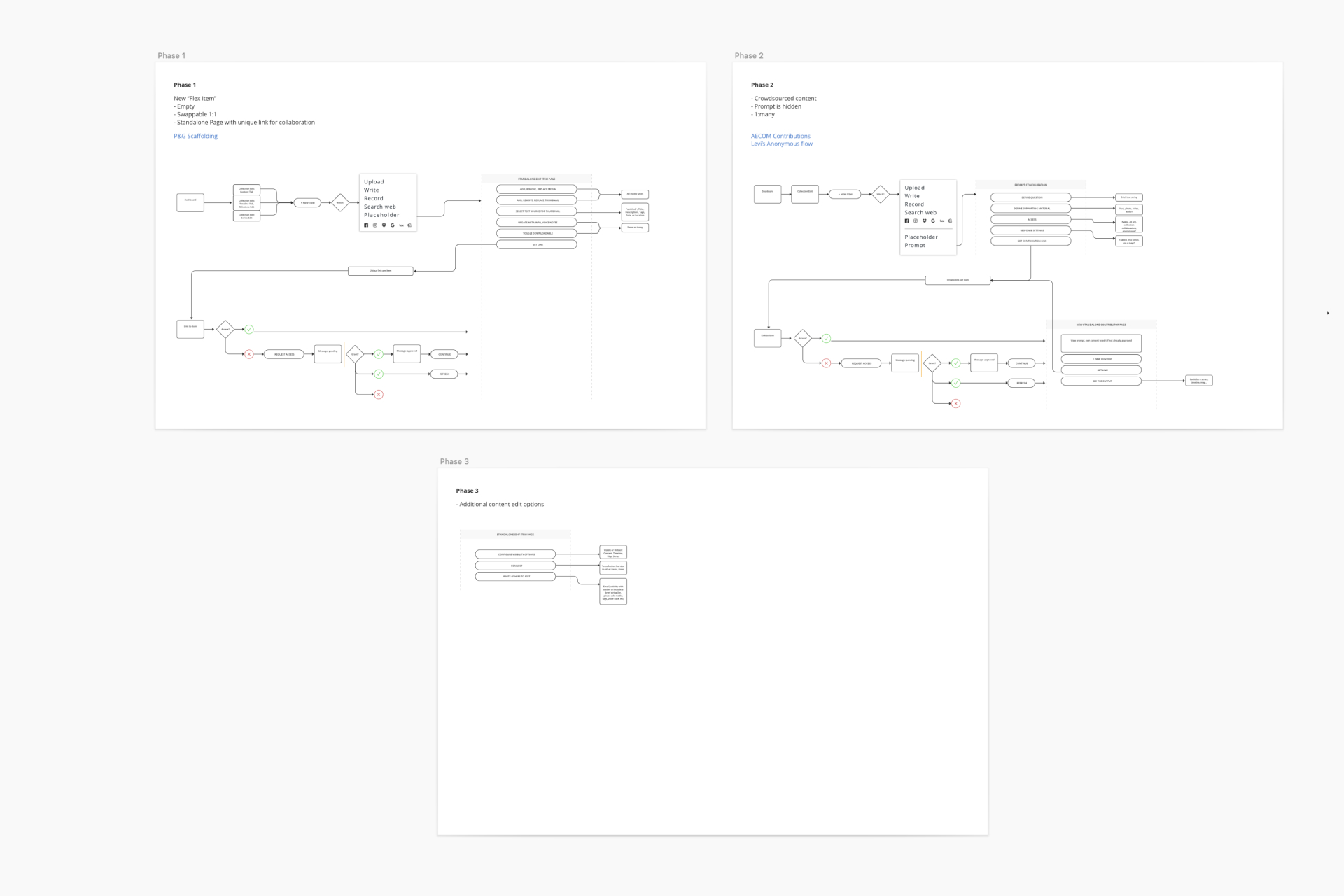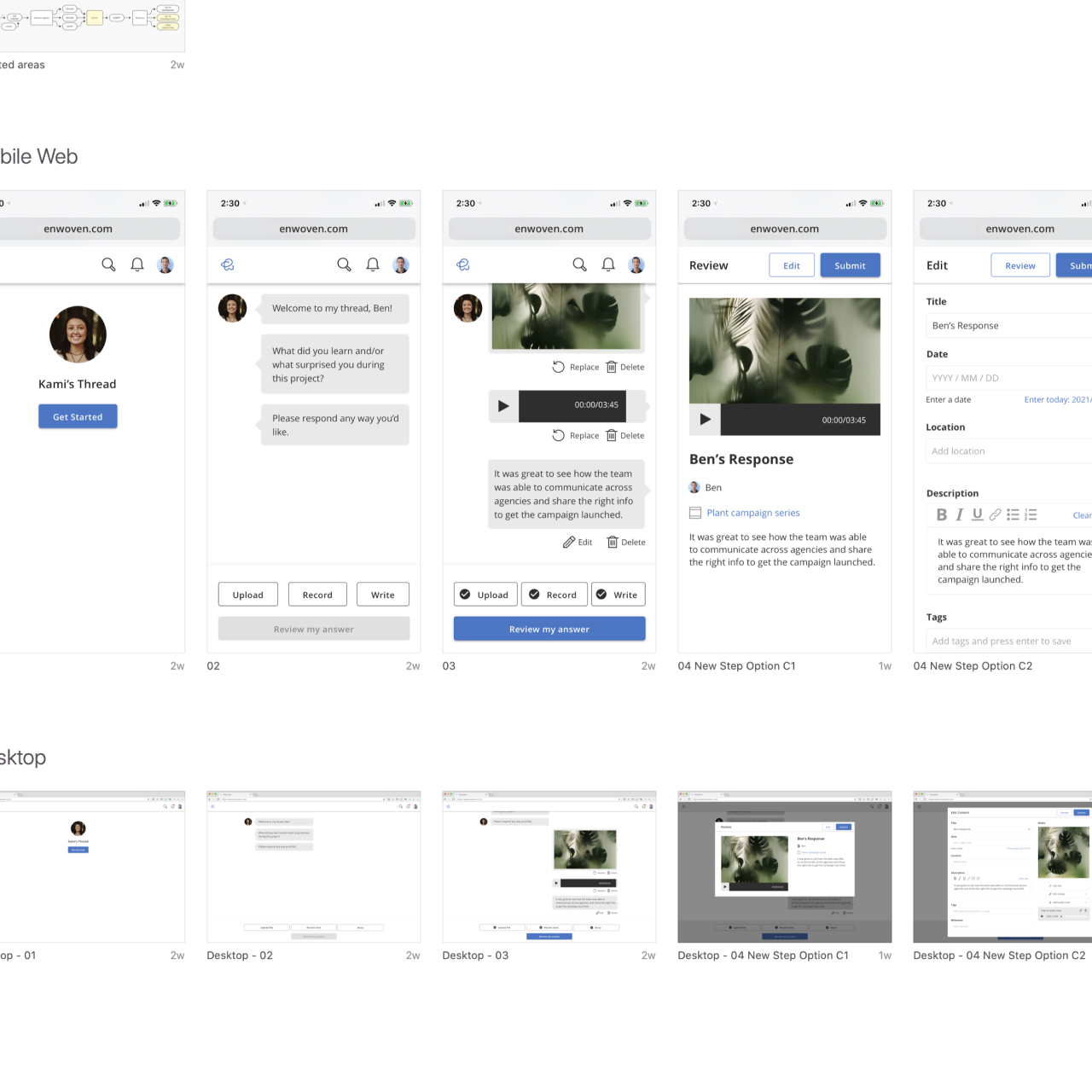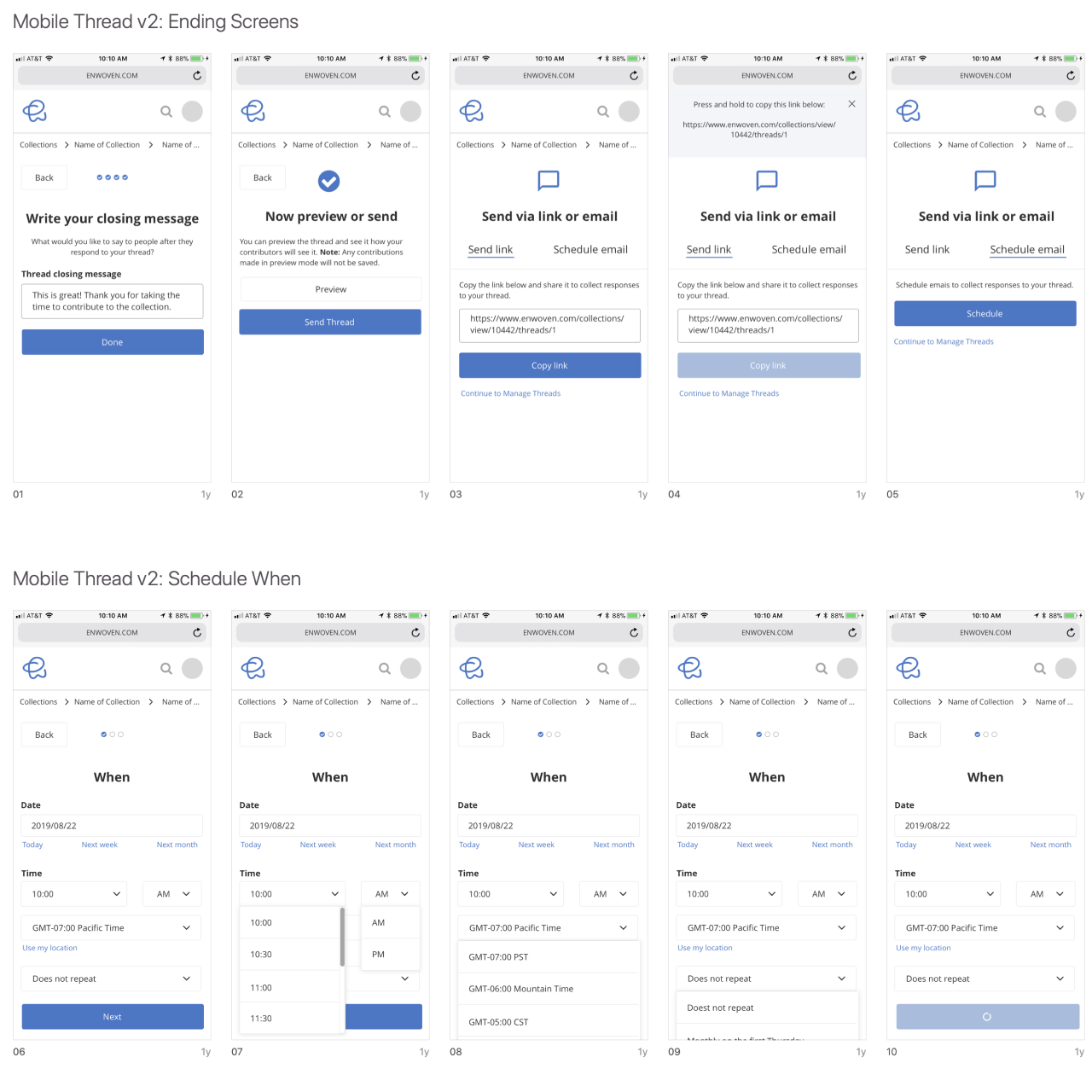Project
Chat Bot
Context
Enwoven is a multi-media, storytelling product for large
businesses. It empowers teams to create digital narratives about historical campaigns,
product innovations, company culture, and social impact.
This chat bot (aka Threads) is an evolving feature aimed at making
retrospectives easier by crowd-sourcing insights on a regular basis and presenting them on a
timeline or slideshow.
Team of 12
Product Design (2), Engineering (5), Marketing (2), Business (3)
Challenge
User: Daryk, Global Brand Director at Reebok
Daryk is responsible for product launches and campaigns and knows that
capturing knowledge about past efforts leads to future success. After each major launch, he
reaches out to his team members...
Key pain points:
- Scheduling large meetings is time consuming.
- People forget what happened and don't prepare.
- Documentation is missing and lacks context.
II.
Discovery
As the head of product, I led weekly feedback synthesis meetings
between Design, Customer Success, and Engineering. It's the perfect time to not only cluster
observations into themes and translate them into insights and opportunity areas, but also to
influence and rally folks behind user-centric priorities.
Before Threads became a formal project, we identified "collaboration"
as a broad, high-impact opportunity area. Why? (1) We knew users appreciated how Enwoven stored
and presented content once it was added to the system, but users increasingly reported having
difficulty gathering content from colleagues in the first place. (2) Without steady content
contributions, the collaborative piece of Enwoven's value proposition was lacking, and
engagement would suffer overall.
To empathize further and get a more holistic view of the focused
problem space, we chose a small group of existing customers to interview. I spoke with several
participants myself and reviewed conversations recorded by my team. We asked targeted questions
around collaboration.
As we got a better sense of our personas, I sat down with our team leads
and intiated an active conversation using shared pen and paper. The simple prompt I asked was
"What are we trying to do?" The resulting doodling exercise helped us align our perspectves and
get invested in co-creation.
III.
Learnings & Ideation
We learned that there were two primary user types involved (Collectors
and Contributors), and both felt stuck.
Collectors lacked a good way to invite others to share specific
knowledge. Why? Existing invitations were too generic. Why not share context and ask for
contributions through email or another medium? It was time consuming, redundant, and required
too much effort to organize.
Contributors felt unable and unmotivated to help. Why? They weren't
familiar with Enwoven. They were overwhelmed by vague asks from Collectors. Why? Few people want
to learn new tools, and it can be difficult to collaborate without clarity.
Before brainstorming solutions with the team, I wanted to add to our
qualitative research with another type of reference material based on other tools and products
that came up in conversations. I selected eight to explore and analyze. While none would be a
perfect fit for the challenge, each had something to offer in terms of inspiration.
Design principles for the feature:
- Light touch (easy)
- Familiar feel (human)
- Powerful (magic)
How might we questions:
- ...make collaboration more precise?
- ...give users manageable tasks?
- ...reduce friction and scale effort?
Ideas came from each team. These included custom email invitations,
better deep-linking, checklists, kanban boards, enhanced surveys, automated folder syncing,
integrations with Slack/MS Teams, and a white-glove service provided by a "content concierge."
After a week or so of failing fast, the concept of a chat bot emerged
as a match for the design principles we defined.
Thread = 1 Prompt + 1 Response
The scope of sub-features was getting pretty meaty, so I decided to
shift us from "flare" to "focus" and defined some phases, then took the first pass at generating
flows and wireframes.
IV.
Iterations
After doing a round of design critique and cross-functional team
review, I implemented some changes and passed ownership to our senior product designer for the
next couple iterations. She ran a handful of virtual user testing sessions, and our customer
success team also collected feedback from friendly users.
We continued to reshape the design, optimizing for flexibility and
response rates. This led us to make a significant, perhaps blunt change to simplify the anatomy
of a Thread (1 question + 1 response), which initially included a larger number of questions and
a multitude of response configurations. When creating a Thread, options would leverage smart
defaults and capturing responses would be best handled by sending out a link.
We rolled out the feature slowly while tackling various gaps and
opportunities (listed below). I prioritized these on an effort-versus-impact matrix and
continued with the phases we had identified at kickoff.
- Notifications
- Scheduling
- Reminder "Nagbot"
- Review
- Anonymous contributions
- Templates
V.
Impact
These efforts (and more) led to the development of a core piece of
functionality in the Enwoven product. Numbers show that it is Enwoven's best feature for
triggering asynchronous collaboration, and users continue to share both positive and
constructive feedback.
Our team was able to build a lot of comradery with shared focus, and
the momentum and energy was contagious amongst our investors and board members.

